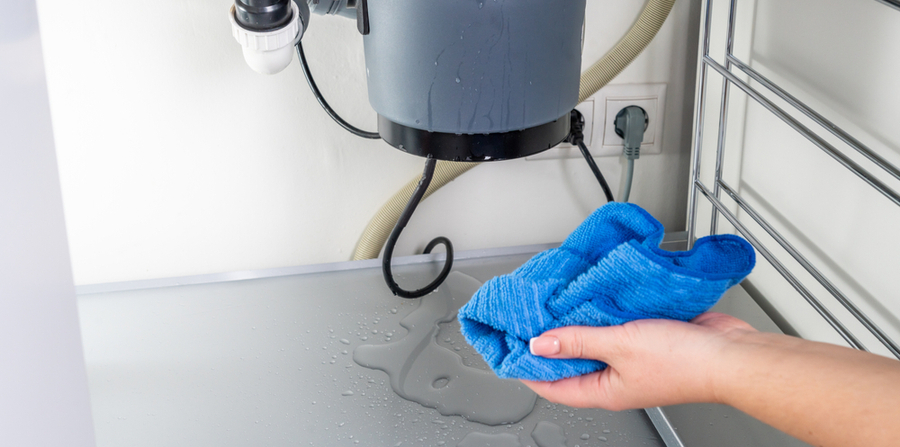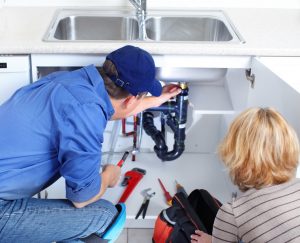Best Tips for Fixing a Leaking Waste Disposal Unit
Best Tips for Fixing a Leaking Waste Disposal Unit
Blog Article
What are your ideas on Why Is My Garbage Disposal Leaking From the Bottom??

Garbage disposals are crucial kitchen devices that assist in throwing away food waste efficiently. Nonetheless, a dripping garbage disposal can be an irritating and unpleasant trouble to manage. The good news is, lots of leaks can be fixed conveniently with a couple of basic actions. In this post, we will review how to deal with a leaking waste disposal unit successfully.
Introduction
Garbage disposals are mounted under kitchen sinks and are developed to shred food waste right into smaller sized pieces, enabling it to pass through the plumbing system conveniently. While these tools are typically trusted, leaks can happen over time because of deterioration, loosened connections, or damage to the unit.
Typical Reasons For Leaks in Rubbish Disposals
Worn Seals and Gaskets
Seals and gaskets play a vital duty in stopping water from dripping out of the waste disposal unit. With time, these parts can degrade, causing leaks around the disposal device.
Loose Links
The connections between the waste disposal unit and the plumbing system can end up being loose with time, triggering water to leak out throughout operation.
Splits or Holes in the Disposal Device
Physical damage to the garbage disposal, such as cracks or holes in the real estate, can likewise cause leakages.
Determining the Source of the Leak
Before trying to fix a dripping garbage disposal, it is vital to identify the source of the leakage. This can generally be done through visual examination or by conducting easy examinations.
Visual Examination
Inspect the garbage disposal system very carefully for any kind of signs of water leakage. Pay very close attention to areas around seals, gaskets, and connection points.
Evaluating for Leaks
One way to evaluate for leaks is by running water via the disposal device and looking for any type of visible signs of leak.
Devices and Materials Needed for Repairing a Leaking Waste Disposal Unit
Before starting the fixing procedure, gather the essential devices and materials, consisting of a screwdriver, flexible wrench, plumbing's putty, replacement seals or gaskets, and epoxy or patching material for repairing cracks or holes.
Step-by-Step Guide to Repairing a Leaking Garbage Disposal
Shut off the Power
Prior to attempting any type of repair work, ensure that the power to the garbage disposal device is switched off to stop the danger of electric shock.
Locate the Leakage
Recognize the precise place of the leakage and figure out the cause.
Tighten up Links
Use a wrench to tighten up any loosened links between the disposal system and the pipes system.
Replace Seals or Gaskets
If the leak results from used seals or gaskets, get rid of the old components and change them with brand-new ones.
Patching Cracks or Openings
For fractures or holes in the disposal unit, usage epoxy or a suitable patching material to secure the damaged location.
Evaluating the Waste Disposal Unit After Repair Service
Once the repair service is full, evaluate the waste disposal unit by running water through it to guarantee that the leakage has actually been fixed.
Preventive Upkeep Tips to Stay Clear Of Future Leaks
To prevent future leaks, it is necessary to do normal maintenance on your garbage disposal. This includes keeping it clean, avoiding putting non-food items or hard objects down the disposal, and occasionally looking for leakages or various other concerns.
Verdict
To conclude, dealing with a dripping garbage disposal is a reasonably straightforward procedure that can be finished with fundamental devices and materials. By adhering to the steps detailed in this article and exercising preventative maintenance, you can maintain your waste disposal unit in good working condition and avoid expensive fixings in the future.
HERE’S HOW TO FIX YOUR GARBAGE DISPOSAL
WHAT TO DO IF SOMETHING IS STUCK IN YOUR GARBAGE DISPOSAL
If the impeller won’t turn, there’s probably something stuck in the disposal. It could be a steak bone or peach pit, although plumbers report pulling all sorts of inappropriate objects out of disposals, such as bottle caps or aluminum foil. Make sure power to the disposal is off, and look inside to see if you can see the source of the jam.
Never stick your fingers in a disposal. Pull out anything you see with tongs or pliers.
If the disposal still won’t work, it may be time to call a plumber or consider buying a new disposal. GEM Plumbing & Heating is here for all of your garbage disposal needs.
WHAT TO DO IF YOUR GARBAGE DISPOSAL DRAIN IS CLOGGED
Take everything out from underneath your sink and put a bucket or other container under your disposal to catch any water that drains out. Disconnect your disposal from the power supply. If it’s plugged into a wall outlet, unplug it. If it’s hardwired into an electrical box, go to the electrical panel and turn off the breaker for the disposal. Pour ¼ cup of baking soda into the drain, followed by ½ cup of white vinegar. Give the solution a few minutes to fizz and do its work. Look into the disposal with a flashlight to see if you can see an object that might be causing the clog. If you see it, remove it using tongs or pliers. MORE TIPS ON DEALING WITH A CLOGGED GARBAGE DISPOSAL
Never use drain cleaner in a garbage disposal. It can damage the plastic parts inside the disposal. You can also be splashed with the caustic liquid while working to clear the clog. Beware! Never stick your fingers into a garbage disposal. Trust us — not a good idea. In many instances, your dishwasher drains through your garbage disposal. This allows the disposal to grind any large food particles that may be drained out of your dishwasher. There are some jurisdictions, however, where the plumbing code prohibits such a connection. WHAT TO DO WHEN YOUR DISHWASHER DRAINS THROUGH THE DISPOSAL
Run some water in the sink so your plunger has at least a ½-inch of water to create a seal and plunge vigorously up and down several times. You may need to repeat this several times. Run hot water down the drain to clear any residue that remains.

I recently found that page on How to fix a pretty consistent leak from my garbage disposal while looking around the web. If you please take the opportunity to promote this blog entry if you liked it. Thank you for taking the time to read it.
Call Today Report this page